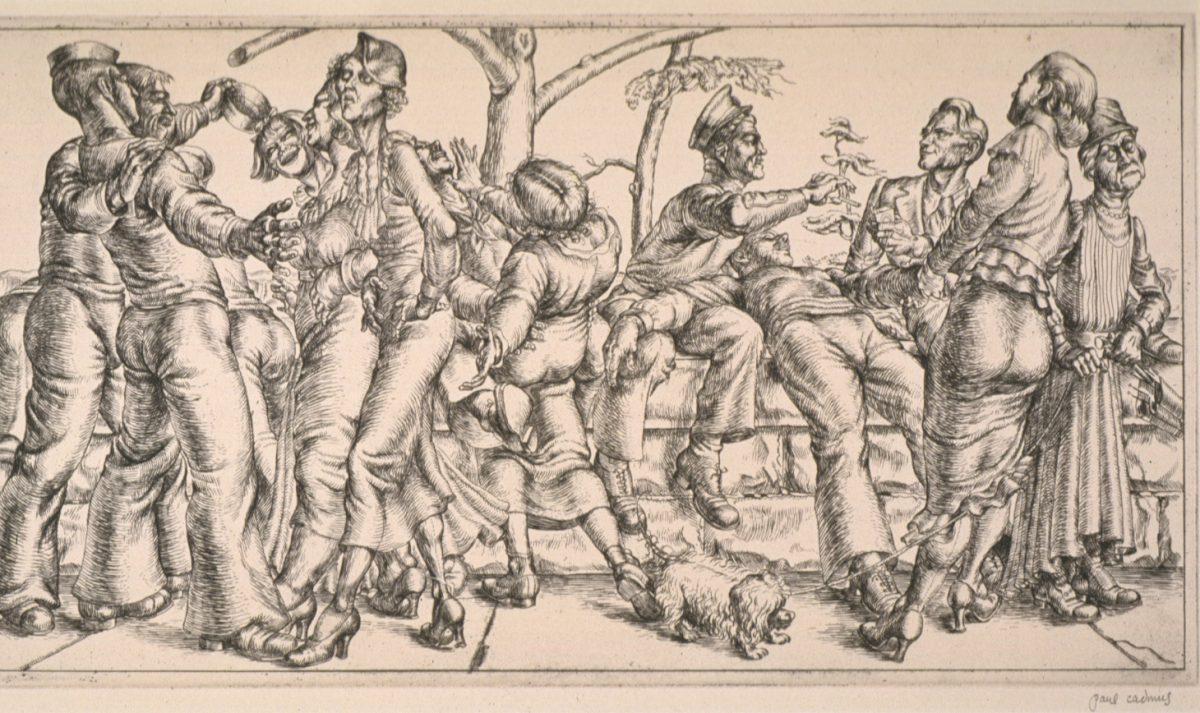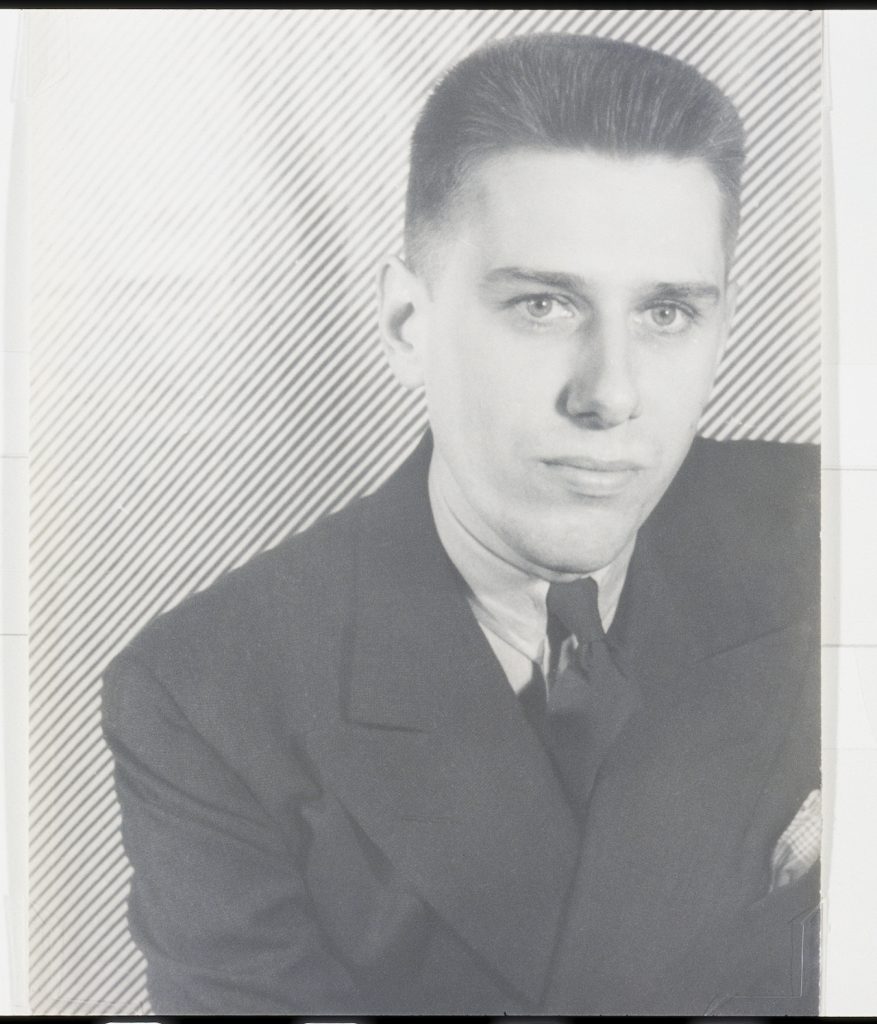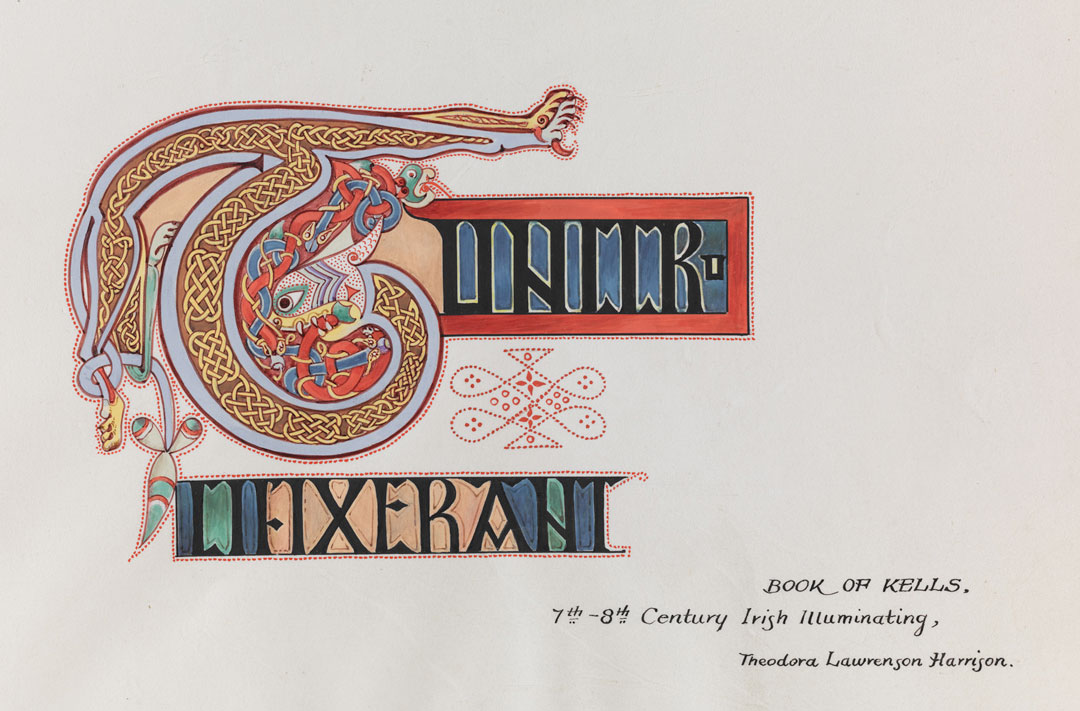Pride Month: The Fleet’s In and Queer Art at SAM
This July marks my one-year anniversary at SAM and June was my first Pride in Seattle. I even had the honor of walking the parade with the city’s Consulate of Mexico. As a gay professional of Mexican descent, this is all a big deal for me!
In my role as the museum’s deputy director for art, I work among so much art, and every day I’m actively discovering captivating items within the SAM collection. Thinking about LGBTQ+ artists, I was surprised to learn that the collection has a print of The Fleet’s In (1934) by gay artist Paul Cadmus. He created this work on paper in response to the censorship of his painting of the same subject. In it, a raucous group of sailors enjoy shore leave while in Manhattan. The original painting, commissioned through the Public Works of Art Project (PWAP) during the Great Depression, caused quite a stir in its day. So much so that it was removed from view for what Naval officers and critics considered “outrageous” for the behavior depicted in the work: the figures, many from the LGBTQ+ community, merrymaking with the featured service men. A queer celebration appropriate for Pride Month! The original painting is part of the Met’s collection, and you can learn more about it here.
To this day, the painting has had limited exposure but it is well known within queer art history. The print version, like the one in SAM’s collection, is important because it was intentionally created by Cadmus in an act of rebellion to disseminate the image and prevent its censorship. He would even credit the uproar with making his work more well known during his life. The work may have garnered a negative response, but the image itself carries gay culture, much of it coded and strategically placed by Cadmus, during a period when homosexuality was illegal. The print at SAM is interesting because it was gifted to the collection in 1944 by the founder of our museum, Dr. Richard Fuller. Could he have known about its notoriety and importance before gifting it to the museum? To more surprise, we also have a 1937 photographed portrait of Cadmus by Carl Van Vechten in the museum collection.
Reflecting on the collection during Pride Month, I sought other queerness currently on view in SAM’s galleries and by gay artists. Pop artist Andy Warhol has a strong presence in the museum; he even came to the museum for a solo exhibition in 1976. His large painting of the musician Elvis Presley as a young gunslinger heartthrob immortalized in silver is not only a reference to the future but to the reflective aesthetic of his famed studio the Silver Factory. It was an inclusive space for its day and a beacon for anyone who felt different, including members of the LGBTQ+ community. Some individuals who stood out even took on a role as “Superstar” of the Factory for their beauty, personality, or talent. While Warhol’s universe tended to focus around himself, his impact on popular culture included making queerness more visual, and many artists today follow in his footsteps.
Everywhere you turn, the museum also has a younger generation of queer artists on view: Mickalene Thomas’s large bedazzled painting, Chicano artist Laura Aguilar’s evocative and haunting black-and-white photography, Native American multidisciplinary artist Jeffrey Gibson’s beaded punching bag with the phrase “If I Ruled the World” in colorful plastic beadwork, Jacolby Satterwhite’s projected video work about his mother and Ballroom culture, Kehinde Wiley’s portrait featuring a Black subject in a classical style and Nick Cave’s maximalist soundsuit. There’s a recent acquisition by Naama Tsabar, an Israeli artist (and friend) whose practice includes intimacy and contact through the tactile materials that she uses, sculptures she builds, and evocative sonic performances. In my previous role at The Andy Warhol Museum, I hosted a performance of hers in conjunction with the exhibition Fantasy America. Titled Stranger, it comprised a double-sided guitar and two nearly physically identical women (the artist and Kristin Mueller) struggling through a non-verbal but acoustic conversation. Many of these artists I have followed for years and have even met. Having them in the collection is so inspiring and special for Seattle.
Although marginalized peoples enjoy this honorary month of acknowledgement, the support in this city is ongoing and Pride Month felt the most festive during a time of nationwide hate and oppression against LGBTQ+ people. In addition, I’ve met so many people, including colleagues at SAM, who are also part of the community or dedicated allies. We work across many departments in the museum and it’s clear we really care about the community in Seattle. Pride Month has passed, but the visibility and support of LGBTQ+ artists has and will continue at SAM.
– José Carlos-Diaz, SAM Susan Brotman Deputy Director for Art
Photos: The Fleet’s In, 1934, Paul Cadmus, American, 1904-1999, print, Eugene Fuller Memorial Collection, 44.229. © Estate of Paul Cadmus. Paul Cadmus, 1937, gelatin silver print, 10 x 7 5/8 in. (25.4 x 19.4 cm), Mary Arrington Small Estate Acquisition Fund and Photography Purchase Fund in honor of Cheryl Ann Christie, 98.87. © Estate of Paul Cadmus.


